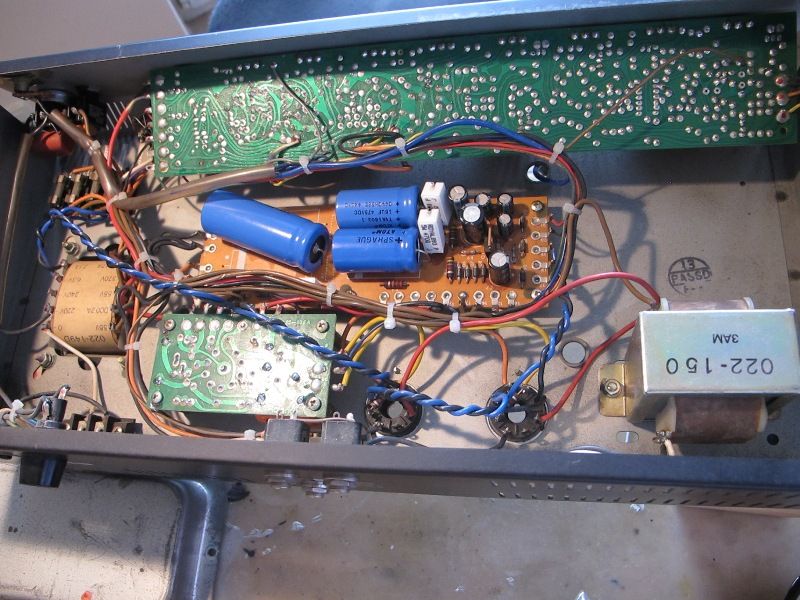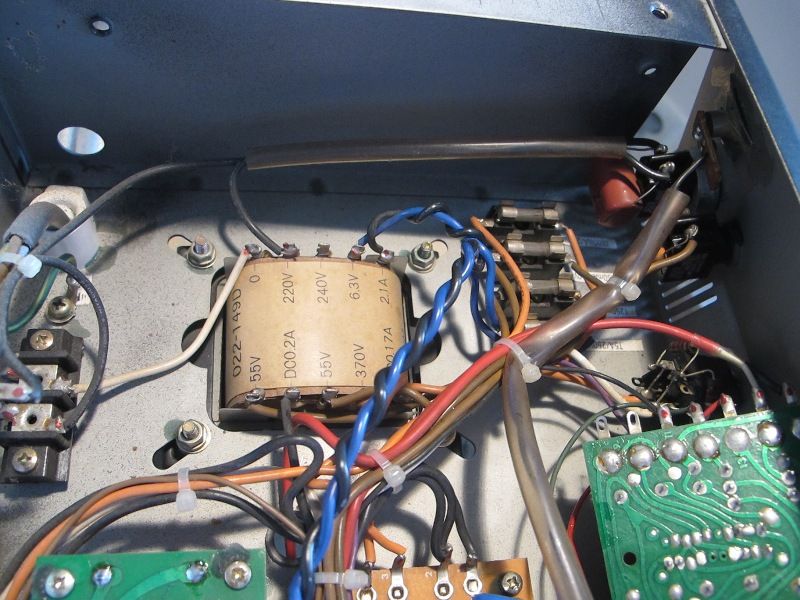Hi all!
I have a roland Bolt 30 amp that I just love but it exhibits a pretty loud 60 cycle hum when powered on, with or without a guitar plugged into the input. If I plug into the main in the hum dissapears but I guess thats to be expected.
This amp uses the pretty rare 7591 power tubes and has the original 1980 RCA tubes in it. So I am awaiting a set of EH tubes to see if thats the problem. Here's what I've done so far to no avail on the hum-
1] new spague filter caps and electrolytics on the power supply board.
2] twisted and lifted the heater wires
3] tried various 12at7 phase inverter tubes. [a 12au7 did noticably quiet the amp, but lowered the volume too much]
I found this info [scroll down to the Roland bolt 60 info] http://www.geocities.jp/dgb_studio/G_amp_e.htm
and there's some info and a schematic about adding caps to the power supply to quiet the hum...but I dont really understand schematics enough to go for it. This is my gigging amp and I really need to keep it working! He talks here about adding them to the effects loop wires I think?
Apparently all the info on mods for the Roland Bolt series amps was at one time available online here- Roland Bolt 60
but this sight and its forum are defunct and the moderator is MIA :-(
If any body has this info archived anywhere it would be invaluable to me!! I'd like to install a proper standby switch [the bolt's aren't true standby] and wire in a 3 spring reverb,all of which were at one time available on the Roland Bolt page....but its gone
Again I'm not really confident with schematics so some hand holding would be needed
Here's a gut shot of my bolt 30 after the cap job, just cause I like gut shots!


I have a roland Bolt 30 amp that I just love but it exhibits a pretty loud 60 cycle hum when powered on, with or without a guitar plugged into the input. If I plug into the main in the hum dissapears but I guess thats to be expected.
This amp uses the pretty rare 7591 power tubes and has the original 1980 RCA tubes in it. So I am awaiting a set of EH tubes to see if thats the problem. Here's what I've done so far to no avail on the hum-
1] new spague filter caps and electrolytics on the power supply board.
2] twisted and lifted the heater wires
3] tried various 12at7 phase inverter tubes. [a 12au7 did noticably quiet the amp, but lowered the volume too much]
I found this info [scroll down to the Roland bolt 60 info] http://www.geocities.jp/dgb_studio/G_amp_e.htm
and there's some info and a schematic about adding caps to the power supply to quiet the hum...but I dont really understand schematics enough to go for it. This is my gigging amp and I really need to keep it working! He talks here about adding them to the effects loop wires I think?

Apparently all the info on mods for the Roland Bolt series amps was at one time available online here- Roland Bolt 60
but this sight and its forum are defunct and the moderator is MIA :-(
If any body has this info archived anywhere it would be invaluable to me!! I'd like to install a proper standby switch [the bolt's aren't true standby] and wire in a 3 spring reverb,all of which were at one time available on the Roland Bolt page....but its gone
Again I'm not really confident with schematics so some hand holding would be needed

Here's a gut shot of my bolt 30 after the cap job, just cause I like gut shots!



Comment